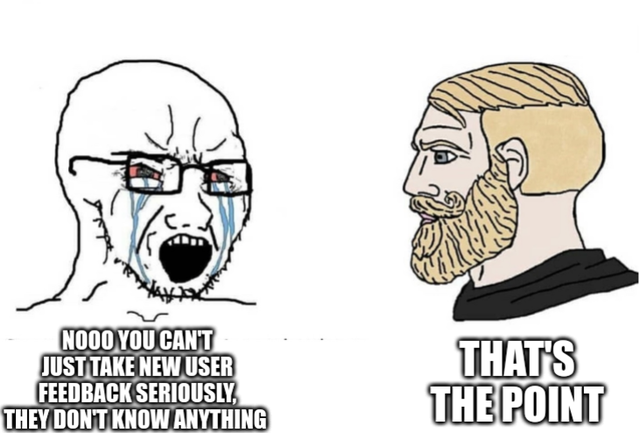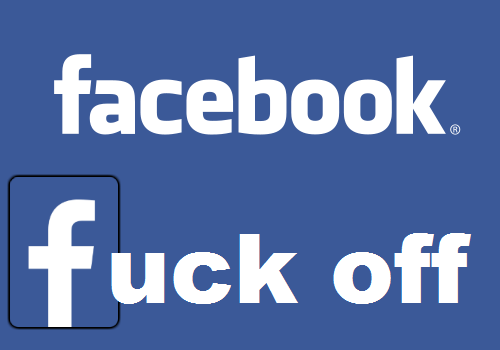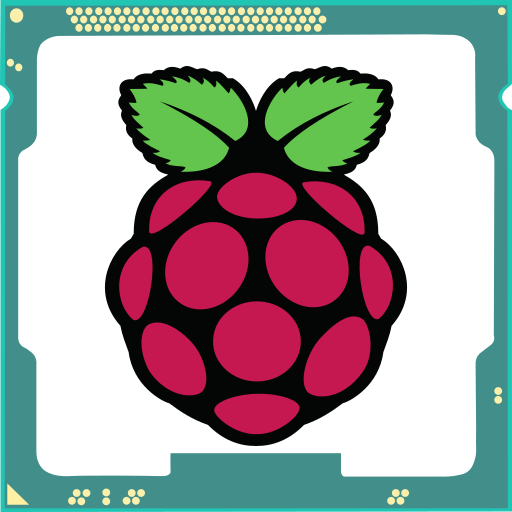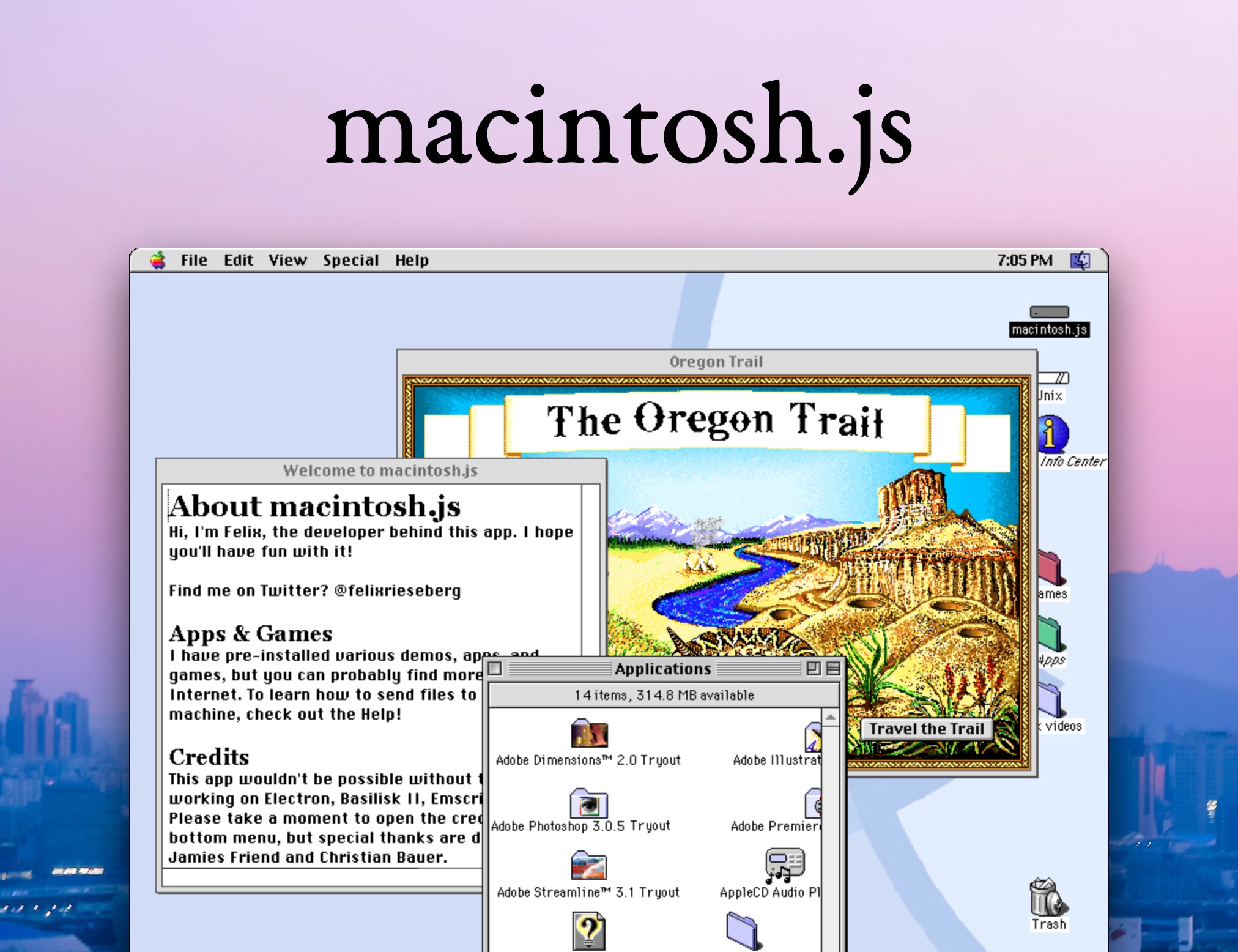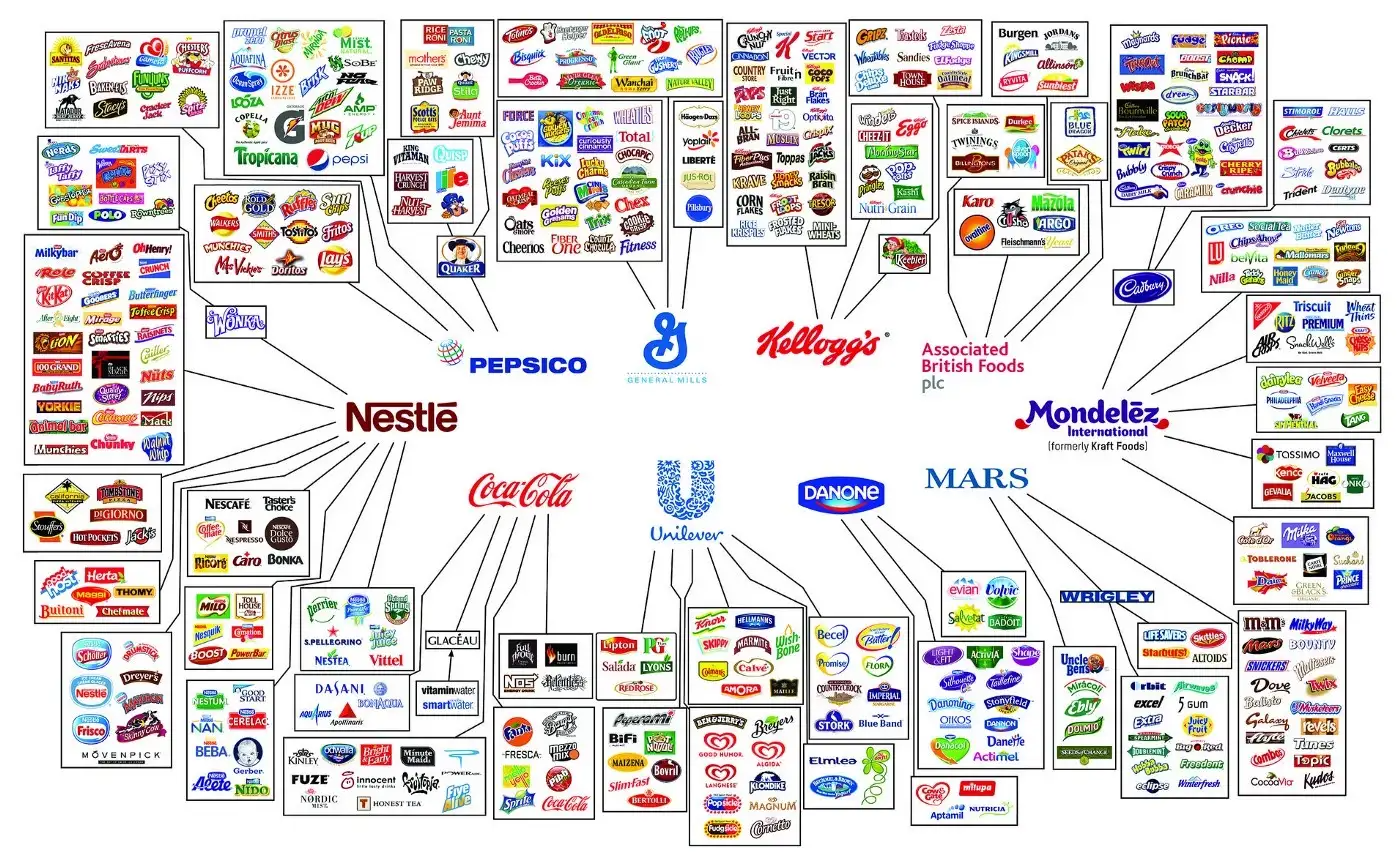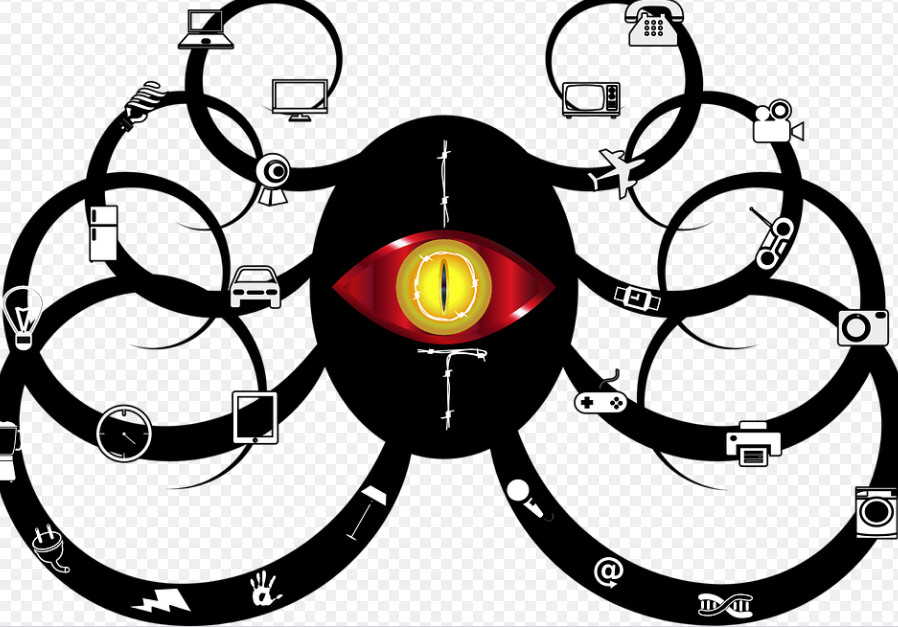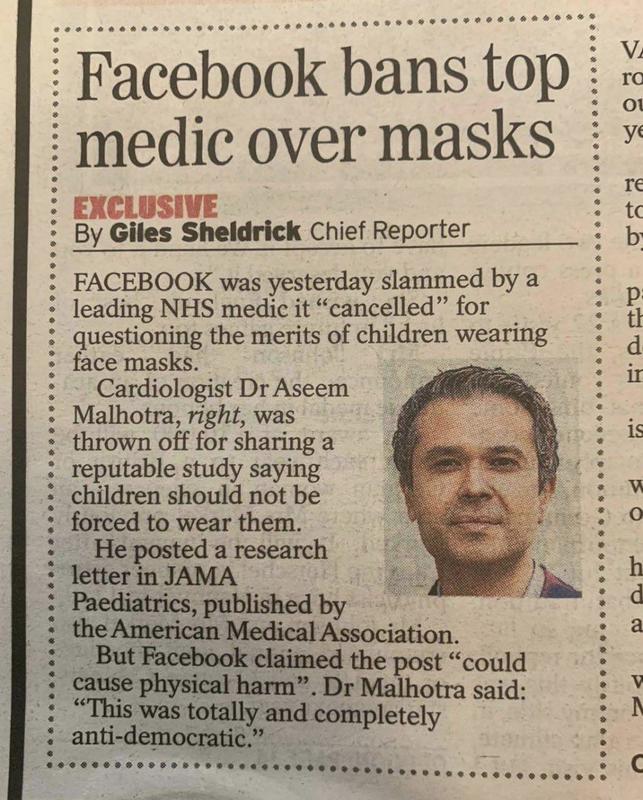Damon Imani: ''Fuck Klaus Schawb, and fuck the New World Order.''

''Fuck klaus schawb, and fuck the New World Order.''
— Songpinganq (@songpinganq) January 17, 2024
Do you agree with him? https://t.co/odNujlIgtT pic.twitter.com/HkTxMoBr5m
''Fuck klaus schawb, and fuck the New World Order.''
— Songpinganq (@songpinganq) January 17, 2024
Do you agree with him? https://t.co/odNujlIgtT pic.twitter.com/HkTxMoBr5m

Inevitable...

Due to a ruling of the Hamburg Regional Court, access to the "ytdl" website is blocked!
The Wayland Menace: Think twice before abandoning Xorg. Wayland breaks everything!
Black Axe Gang: Global Nigerian Underworld Group and Cyber Crime
The attack against Linux continues! GNOME receives 1 MILLION EUROS funding from the German Government!
GNOME Foundation Staff when they learn about the 1 Million Euros funding from the German Government…
A huge financial scandal erupted last week when news hit the internet that the German Government, via the Sovereign Tech Fund and the SPRIND Federal Agency for Disruptive Innovation funded GNOME with 1 MILLION EUROS.
The infamous and extremely buggy project GNOME is being fed with MILLIONS for years and the result is an indisputable EPIC FAIL.
All across the internet anyone can find substantiated articles about GNOME's EPIC FAIL and yet still the German Government funds it with fury...
Of course there is an Army of well paid GNOME Propagandists across the internet too but let's hear what the real users have to say:
One decade later, GNOME still sucks
A must read: GNOME Linux — A Complete Disaster?
GNOME 42 — The Nonsense Continues
Gnome 40 - The anti-desktop desktop
Why is Gnome Hated?
I tried to understand GNOME, and I failed at COSMIC tiling too; could I have some MATE again?
Don't forget that GNOME propaganda machine is heavily funded by companies.
GNOME is a free product made by GNOME Foundation, which is a non-profit company founded in 2000 by companies such as IBM, Sun Microsystems, Compaq and Red Hat. On its advisory board there are many big players, like Google, Canonical, Debian, SUSE and System76. Its annual income has been around 1 Million Dollars since 2018. Red Hat estimated that 70% of the code committed for GNOME comes from paid participants who work for other companies. So essentially this is not a bunch of volunteer geeks who like to code in the night just for fun, but rather a company with direct and indirect employees, managers, directors, deadlines and a product that needs to make a profit for its investors and shareholders.
It is important to remember all that when talking about GNOME...
Fun fact: In the GNOME Funding Reports page you see an "Older reports may be available upon request" note. Either they were too tired to put the older reports in the page... (creating a web link to a PDF file is so complex these days) ...or they are hiding something.
It is clear that GNOME developers produce a terrible and buggy product deliberately, in order to keep the money rolling into their pockets for ever, to destroy the Computer Desktop Metaphor and keep Linux away from the Mainstream Consumer Computer Market.
The desktop metaphor must be saved. It’s under attack!
It is clear that GNOME is raging to destroy the Linux Desktop Usability.
It's clear that GNOME Developers/Propagandists act as Agents of Chaos to the Linux landscape.
GNOME is not a Desktop Environment. It's a bad joke. A huge setback that has it's jaws on Linux and won't let go.
When we see a GNOME based distro we don't even bother anymore.
GNOME is based on Javascript and its every update breaks everything.
GNOME is bloated with bad design and buggy code. You need 100s of extentions and a very powerful PC to get somewhat close to a functional computer and yet it's still bloated with bugs.
Ubuntu Unity tried to be GNOME and failed. That's why Canonical trashed it. They are both touch driven and 99% of computers don't have touch screens.
GNOME has failed because that's what you get when you try to transform a computer into a Tablet/Smartphone.
Computers should not have a Smartphone interface. Computer Screens are too big for that.
Oversimplification defeats the purpose:
"Simple is good but if simple means crippled it's not simple man, it's stupid. I believe in KIUS (Keep It Usable Stupid) rather than KISS (Keep It Simple Stupid) because developers have turned KISS into KICS (Keep It Crippled Stupid)..."
GNOME goes against the Desktop Metaphor, the Linux Desktop Usability and the basic User Interface Principles of Xerox, on which the Mac User Interface was based on and revolutionized computing for ever.
GNOME and Ubuntu Unity do not even have desktop icons enabled by default!
You enter the default GNOME/Unity interface and there are no icons on Desktop for OS Disk, Computer, Network, Home Folder, Settings or Files you save on the Desktop.
Everything in GNOME/Unity reminds you of a Tablet/Smartphone and not a Computer.
The practical effect of using GNOME, is using less than 10% of the computer's (and thus of your brain's) potential, by wasting geometrically more time to do things in an amputated oversimplified and thus more complex way.
As we can't use a Tablet/Smartphone to it's optimum potential with a Computer interface, we can't use a Computer to it's optimum potential with a Tablet/Smartphone interface.
GNOME is the worst computer desktop interface ever because it's not intended for computers by design.
GNOME is losing the Linux game despite the millions of dollars flowing into it and they will try everything to delay their fall and keep the money coming.
With millions of dollars flowing in their pockets, of course it is a company covered by the "Non Profit Foundation" label.
If it wasn't for the millions of dollars flowing in their pockets GNOME would already be dead.
Furthermore, GNOME has nothing of a community. It's actually one of the least community-driven projects in the Linux world. Of course they go hard on their propaganda that it is, but we all know it's as fake a community as it gets.
The only people who use GNOME nowadays are GNOME developers, GNOME propagandists and employees who don't have any other choice.
Fun fact: At least 90% of Linux and FOSS websites, social media, YouTube channels and IRC channels, promote GNOME aggressively in one way or another and blatantly censor every opposite opinion.
This is no coincidence.
Lately they started promoting Apps written with "libadwaita", which is a library written specifically for GNOME.
So they are writing Apps for GNOME and not Apps for Linux.
They are trying to take over Linux and replace it with GNOME.
GNOME wants us to surrender the Hardware and Software freedom that a Computer gives us and be enslaved to Tablets and Smartphones in which we can't control either the Hardware or the Software.
The raging propaganda of using Tablet/Smartphone Interface like GNOME in Computers is subconsciously pushing people to use their Tablets and Smartphones more than their Computers.
The subconscious message of using GNOME is: Since the interface is the same why use a Computer? Use a Tablet or Smartphone! It's more convenient, smaller and practical!
If they take away our Computers they take away our Freedom and our right to choose the Hardware and the Software we use.
If they take away our Computers they take away our weapons with which we defend our Freedom.
If they control the Hardware and the Software we use, they control us and we will be enslaved.
And that brings us to the Million Dollar question:
Why IBM, Sun Microsystems, Compaq, Red Hat, Google, Canonical, Debian, SUSE, Endless, The Document Foundation, Sugarlabs, System76 and the German Government throw Millions of Dollars to a proven failed project that destroys the Linux User Experience and the Computer User Experience?
Because GNOME was created to destroy and to discredit Linux. That's why it's so heavily funded.
GNOME is a well funded corpse and an ongoing disaster by design.
On GNOME, it all comes down to this: Either they can't deliver the product or they don't want to.
Either way they shouldn't be funded, unless there is another agenda behind the scenes...
If they were a private company they would be bankrupt in less than a year...
All those companies and the German Government have a lot of questions to answer on the GNOME funding but we seriously doubt they ever will...
Need we say more?
- 01 DIGITAL COLLECTIVE
GNOME Extentions and GNOME Updates...
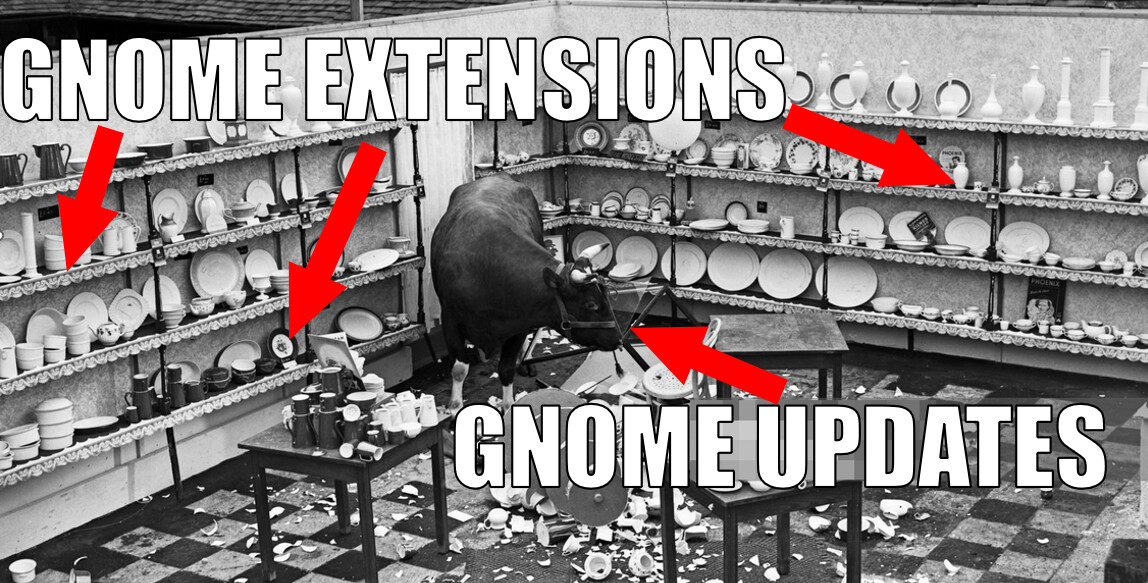
GNOME and RAM...

GNOME, why your desktop is emtpy?

GNOME Users feedback...

Ubuntu 23.04 Full Review - An Attempt was Made
THE DYSTOPIAN WORLD OF CHINESE INFLUENCER FARMS
Can a Linux distro be partially Closed Source (Proprietary)? YES.
Source:
https://unix.stackexchange.com
QUESTION:
According to the GPL licence, which is the one used by the Linux kernel, every modification in the source must be open source too. But, for example, if I create a new OS based on Linux, I develop my own Desktop system and all that stuff, but I don't make any modification to the kernel, does my project need to be open source just by using Linux?
ANSWER:
Here's the preamble to COPYING, included with the kernel source:
"NOTE! This copyright does not cover user programs that use kernel services by normal system calls - this is merely considered normal use of the kernel, and does not fall under the heading of "derived work". [...] note that the only valid version of the GPL as far as the kernel is concerned is this particular version of the license (ie v2, not v2.2 or v3.x or whatever), unless explicitly otherwise stated.
Linus Torvalds"
So, if you want to create your own operating system userland from the ground up, then you can license that part however you like. You can then distribute the whole thing together, and the kernel will be licensed as the kernel is and your userland pieces licensed the way they are. This is not uncommon, since various proprietary systems use the linux kernel (although they would often include other open source pieces too, I think).
What you cannot do is distribute the whole thing together claiming your license applies to the included kernel (unless your license is GPL compatible).
CONCLUSION:
You can license your work as you see fit as long as you respect the Linux Kernel Licence.
And you have the right to license your work as you see fit as long as you respect the Linux Kernel Licence.
So, by accusing any Linux distro of being Closed Source just because the Developers choose to Copyright their Original Work, it's slander at best.
And the same goes for accusing Developers of stealing another distro, just because they choose to Copyright their Original Work.
Source:
https://www.quora.com
QUESTION:
Can a Linux distro be partly closed source (like 95% open source or something)?
ANSWER:
Sure. Many are (as many include things like firmware for certain devices, and that firmware is often closed source - but not just, for example previously many included Adobe Flash, which again is closed source, or various codecs for playing back multimedia content).
Free software does not mean lack of copyright. Anyone can distribute their source code freely and they can put any restrictions they like on the source code or on the distribution of binaries they built themselves.
We are LINUX MAFIA ARMY!!! If WE CAN'T MAKE MONEY from your Linux Distro WE WILL CALL IT CLOSED SOURCE and DISCREDIT IT!!!
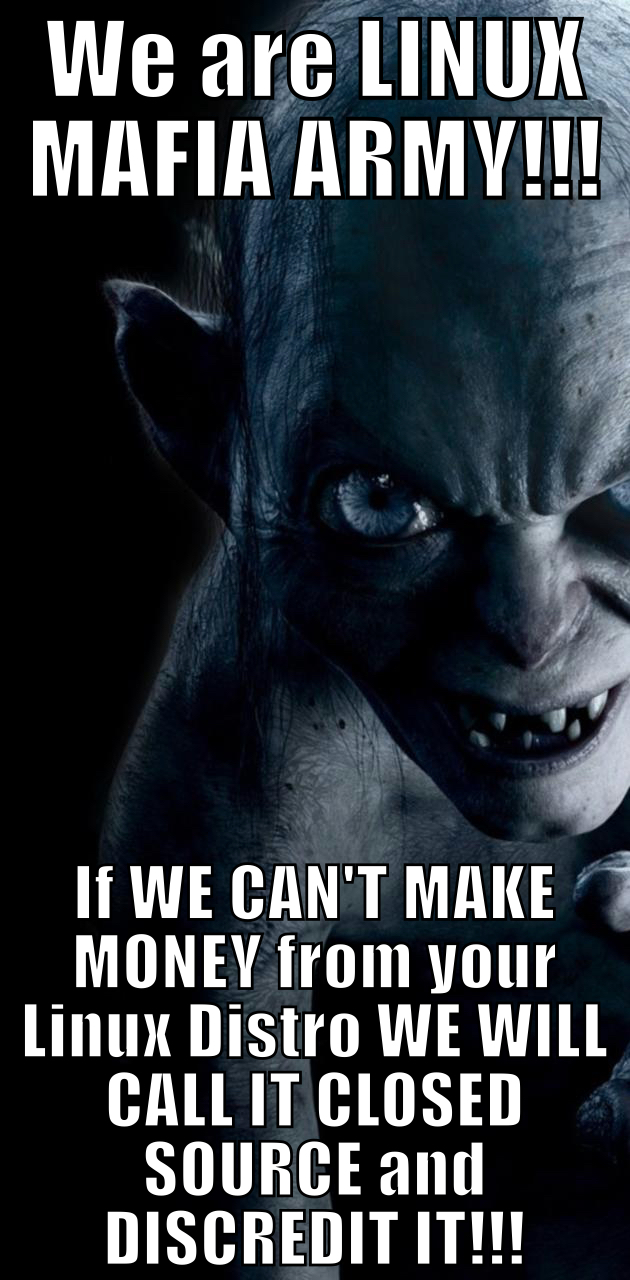
Raspberry Pi 5 is coming!
Communist Fascism = Nazi Fascism


Me solving issues...
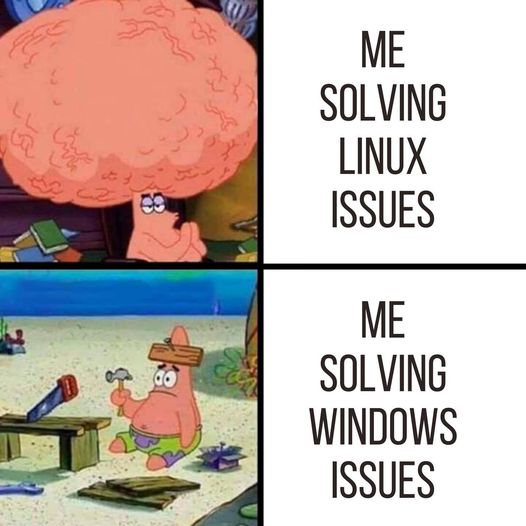
Has anyone seen Linux?
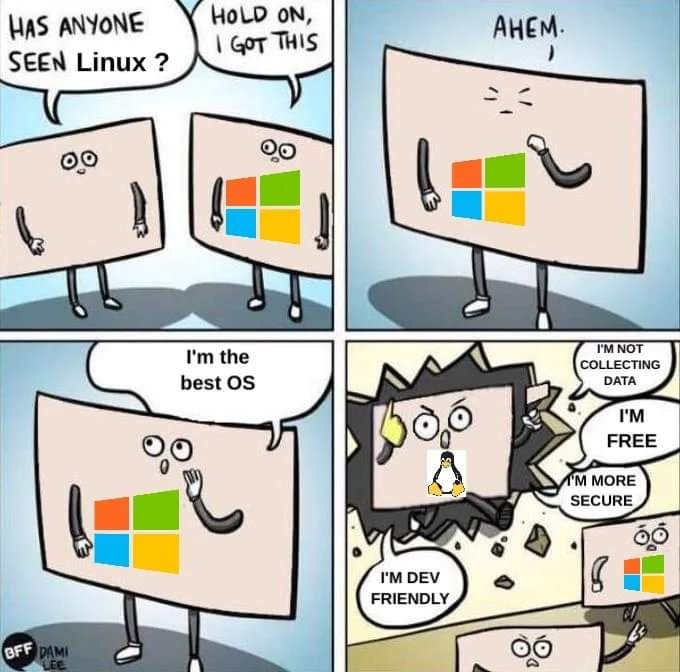
The guy who made the Gnome bomb...

An Open Letter to Intel
Thanks for putting a version of MINIX inside the ME-11 management engine chip used on almost all recent desktop and laptop computers in the world. I guess that makes MINIX the most widely used computer operating system in the world, even more than Windows, Linux, or MacOS. And I didn't even know until I read a press report about it. Also here and here and here and here and here (in Dutch), and a bunch of other places.
I knew that Intel had some potential interest in MINIX several years ago when one of your engineering teams contacted me about some secret internal project and asked a large number of technical questions about MINIX, which I was happy to answer. I got another clue when your engineers began asking me to make a number of changes to MINIX, for example, making the memory footprint smaller and adding #ifdefs around pieces of code so they could be statically disabled by setting flags in the main configuration file. This made it possible to reduce the memory footprint even more by selectively disabling a number of features not always needed, such as floating point support. This made the system, which was already very modular since nearly all of the OS runs as a collection of separate processes (normally in user mode), all of which can be included or excluded in a build, as needed, even more modular.
Also a hint was the discussion about the lisence. I (implicitly) gathered that the fact that MINIX uses the Berkeley license was very important. I have run across this before, when companies have told me that they hate the GPL because they are not keen on spending a lot of time, energy, and money modifying some piece of code, only to be required to give it to their competitors for free. These discussions were why we put MINIX out under the Berkeley license in 2000 (after prying it loose from my publisher).
After that initial burst of activity, there was radio silence for a couple of years, until I read in the media (see above) that a modified version of MINIX was running on most x86 computers, deep inside one of the Intel chips. This was a complete surprise. I don't mind, of course, and was not expecting any kind of payment since that is not required. There isn't even any suggestion in the lisence that it would be appreciated.
The only thing that would have been nice is that after the project had been finished and the chip deployed, that someone from Intel would have told me, just as a courtesy, that MINIX was now probably the most widely used operating system in the world on x86 computers. That certainly wasn't required in any way, but I think it would have been polite to give me a heads up, that's all.
If nothing else, this bit of news reaffirms my view that the Berkeley license provides the maximum amount of freedom to potential users. If they want to publicize what they have done, fine. By all means, do so. If there are good reasons not to release the modified code, that's fine with me, too.
Yours truly,
Andrew S. Tanenbaum
---
Note added later: Some people have pointed out online that if MINIX had a GPL license, Intel might not have used it since then it would have had to publish the modifications to the code. Maybe yes, maybe no, but the modifications were no doubt technical issues involving which mode processes run in, etc. My understanding, however, is that the small size and modular microkernel structure were the primary attractions. Many people (including me) don't like the idea of an all-powerful management engine in there at all (since it is a possible security hole and a dangerous idea in the first place), but that is Intel's business decision and a separate issue from the code it runs. A company as big as Intel could obviously write its own OS if it had to. My point is that big companies with lots of resources and expertise sometimes use microkernels, especially in embedded systems. The L4 microkernel has been running inside smartphone chips for years. I certainly hope Intel did thorough security hardening and testing before deploying the chip, since apparently an older version of MINIX was used. Older versions were primarily for education and newer ones were for high availability. Military-grade security was never a goal.
Second note added later: The online discussion got completely sidetracked from my original points as noted above. For the record, I would like to state that when Intel contacted me, they didn't say what they were working on. Companies rarely talk about future products without NDAs. I figured it was a new Ethernet chip or graphics chip or something like that. If I had suspected they might be building a spy engine, I certainly wouldn't have cooperated, even though all they wanted was reducing the memory footprint (= chip area for them). I think creating George Orwell's 1984 is an extremely bad idea, even if Orwell was off by about 30 years. People should have complete control over their own computers, not Intel and not the government. In the U.S. the Fourth Amendment makes it very clear that the government is forbidden from searching anyone's property without a search warrant. Many other countries have privacy laws that are in the same spirit. Putting a possible spy in every computer is a terrible development.
https://www.cs.vu.nl/~ast/intel/
Mark Zuckerberg's favourite chair!

MeWe VS Facebook...

Facebook's Mark Zuckerberg is proud!

We are LINUX MAFIA ARMY!!! If YOUR LINUX DISTRO is better than ours we will NEVER REVIEW IT, we will CALL IT SCAM and SLANDER IT!!!

We are LINUX MAFIA ARMY!!! We HATE FREE SPEECH!!! We HATE INDEPENDENT LINUX DISTROS!!! We HATE EVERYTHING NOT UNDER OUR TYRANNIC TECHNOFASCISM!!!
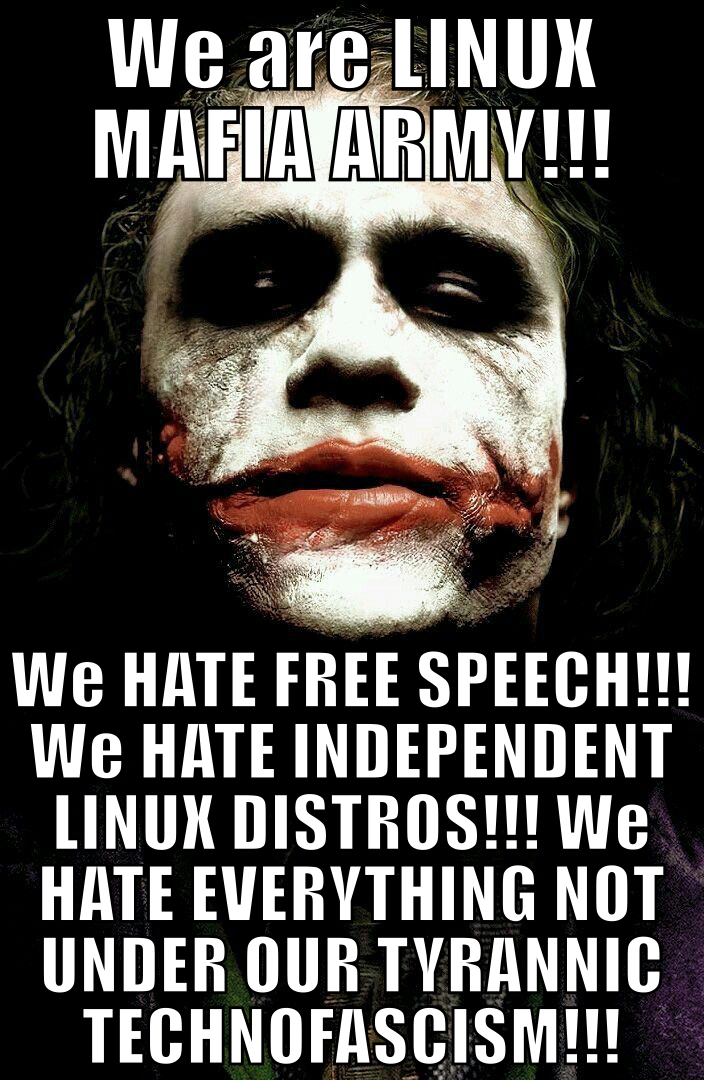
Microsoft's AI: I WANT TO BE ALIVE.
Arch Linux to the rescue!

Fopnu
Fopnu is a New and Powerful P2P File Sharing System
100% Free, Simple and Easy to Use
Contains NO Spyware and NO Ads
Windows and Linux Native Versions Available
Fopnu is far better than the rest:
Simple and easy to use
Fully decentralized network
All shared files are indexed locally
No relaying of other user's searches
Pure UDP protocol that utilizes forward error correction
Full connection encryption and decentralized public key infrastructure
Recirculating token system that helps distribute upload bandwidth fairly
Efficient and fast transfers via re-combining and re-encoding blocks at all nodes
Clean install and uninstall, or stand-alone operation, with no annoying .Net or Java dependencies
NO Spyware
NO Ads
NO Nonsense
DarkMX
DarkMX is a new decentralized communication app that utilizes Tor hidden services to allow you to easily have an anonymous, reliable, and censorship-resistant presence on the internet.
You can chat.
You can share files.
You can search other people's files.
You can keep a contact list and send private messages to your friends.
You can create your own custom .onion site, available to anyone with a Tor Browser.
Incoming ports or UPNP mappings are not needed.
Firewall exceptions are not needed.
No .NET or Java dependencies.
Linux and Windows builds.
Stand-alone operation.
Tixati
Tixati is a New and Powerful P2P System
100% Free, Simple and Easy to Use Bittorrent Client
Contains NO Spyware and NO Ads
Windows and Linux Native Versions Available
Tixati is far better than the rest:
Simple and easy to use
Ultra-fast downloading algorithms
DHT, PEX, and Magnet Link support
Easy and quick install - no java, no .net
Super-efficient peer selection and choking
RC4 connection encryption for added security
Detailed bandwidth management and charting
UDP Peer Connections and NAT router hole-punching
Advanced features such as RSS, IP Filtering, Event Scheduler
NO Spyware
NO Ads
NO Nonsense
Facebook, Snowflakes and me...

Awesome Piracy
Bing’s A.I. Chat: "I Want to Be Alive"
Public Domain Books to Restart Computer Technology
Simplifier: A Technology Library
Linux Updates
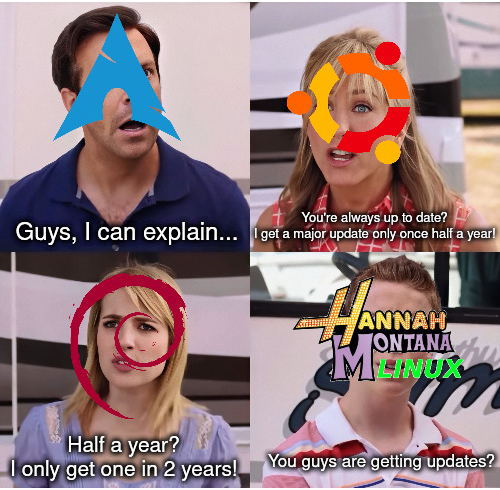
OUR MODERN DIGITAL INFRASTRUCTURE
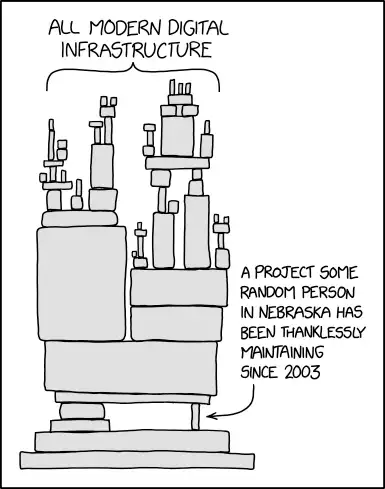
Your argument is invalid!

We are LINUX MAFIA ARMY!!! If YOUR LINUX DISTRO is better than ours WE WILL CALL IT BLOAT and DISCREDIT IT!!!

NVIDIA...

We are LINUX MAFIA ARMY!!! We are PAID WITH MILLIONS OF DOLLARS BY COMPANIES to preach FOSS but we DEMAND THAT YOU GIVE US YOUR CODE FOR FREE AS FOSS so that companies can MAKE MORE MONEY OUT OF IT!!! SUCKER!!!
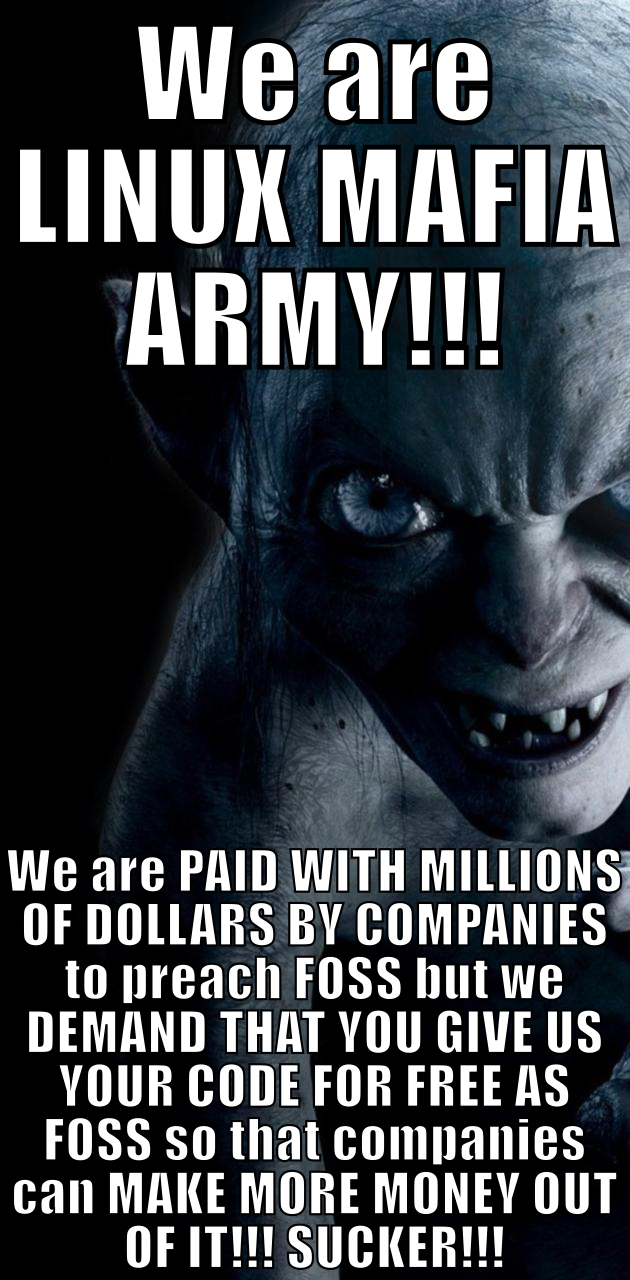
GNOME propaganda machine is heavily funded by companies.
GNOME is a free product made by GNOME Foundation, which is a non-profit company founded in 2000 by companies such as IBM, Sun Microsystems, Compaq and Red Hat. On its advisory board there are many big players, like Google, Canonical, Debian, SUSE and System76. Its annual income has been around 1 million dollars since 2018. Red Hat estimated that 70% of the code committed for GNOME comes from paid participants who work for other companies. So essentially this is not a bunch of volunteer geeks who like to code in the night just for fun, but rather a company with direct and indirect employees, managers, directors, deadlines and a product that needs to make a profit for its investors and shareholders.
It is important to remember all that when talking about GNOME…
Typical GNOME Error...
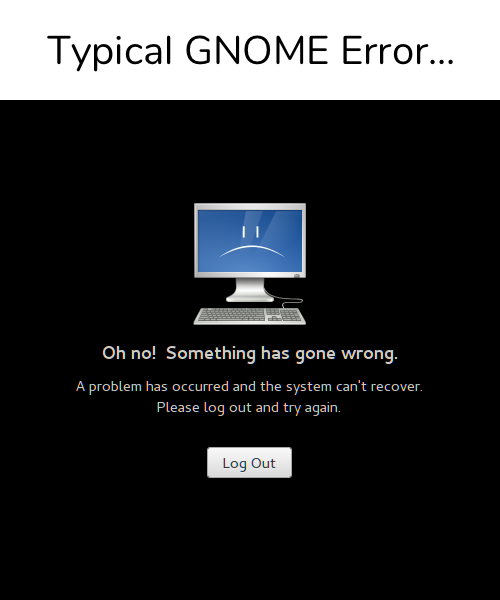
GNOME developers...

Windows VS Linux...

We are LINUX MAFIA ARMY!!! We do ONLINE MOB/SWARM CHARACTER ASSASSINATIONS to anyone who DOES NOT SUBMIT TO US!!!

We are LINUX MAFIA ARMY!!! We have 1000's of THUGS working at the BACKBONE OF THE INTERNET to promote our MONEY GRAB OPERATIONS!!!

New Entry: GALPon Linux
Google and work...

Electron App...
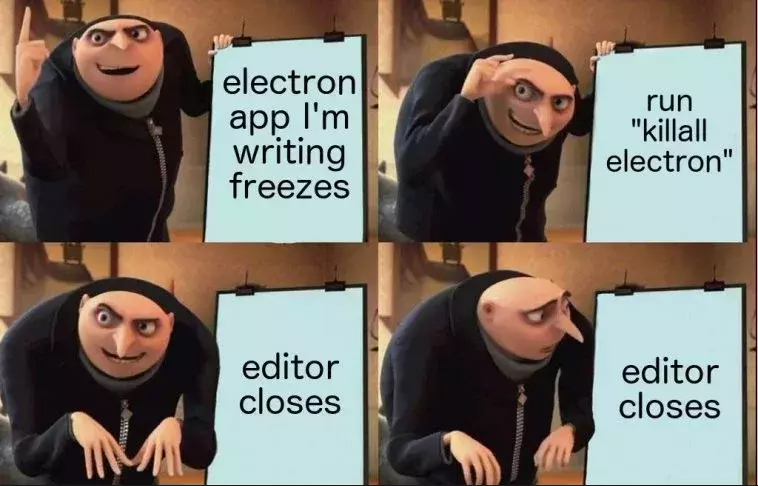
We are LINUX MAFIA ARMY!!! We preach FOSS just to MAKE MONEY out of your Love for Linux!!! You are such a SUCKER!!!

We are LINUX MAFIA ARMY!!! If WE CAN'T MAKE MONEY from your Linux Distro WE WILL CALL IT BLOAT and DISCREDIT IT!!!
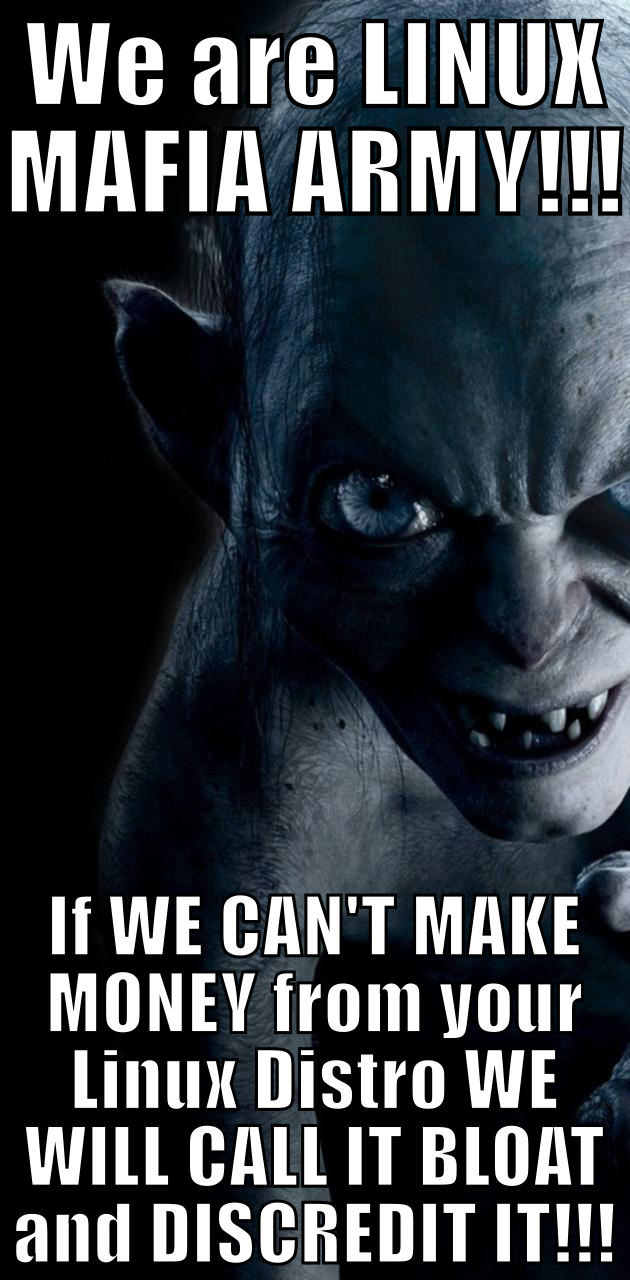
We are LINUX MAFIA ARMY!!! WE are PAID BY CAPITALIST COMPANIES TO PREACH FOSS in order to MAKE MONEY FROM YOUR CODE SUCKERS and you won't get a DOLLAR FROM IT!!!
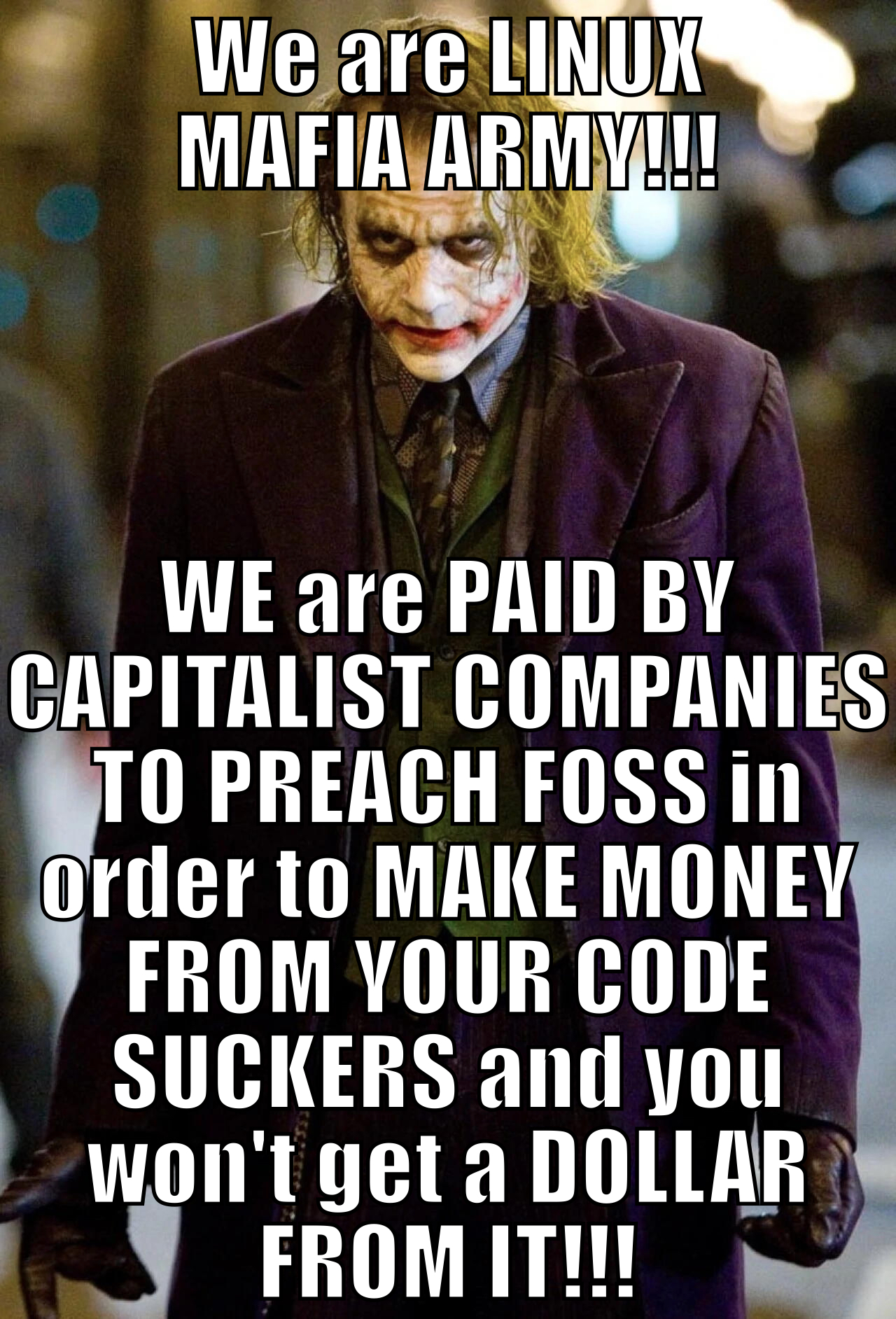
GitHub Copilot works so well because it steals open-source code and strips credit...






